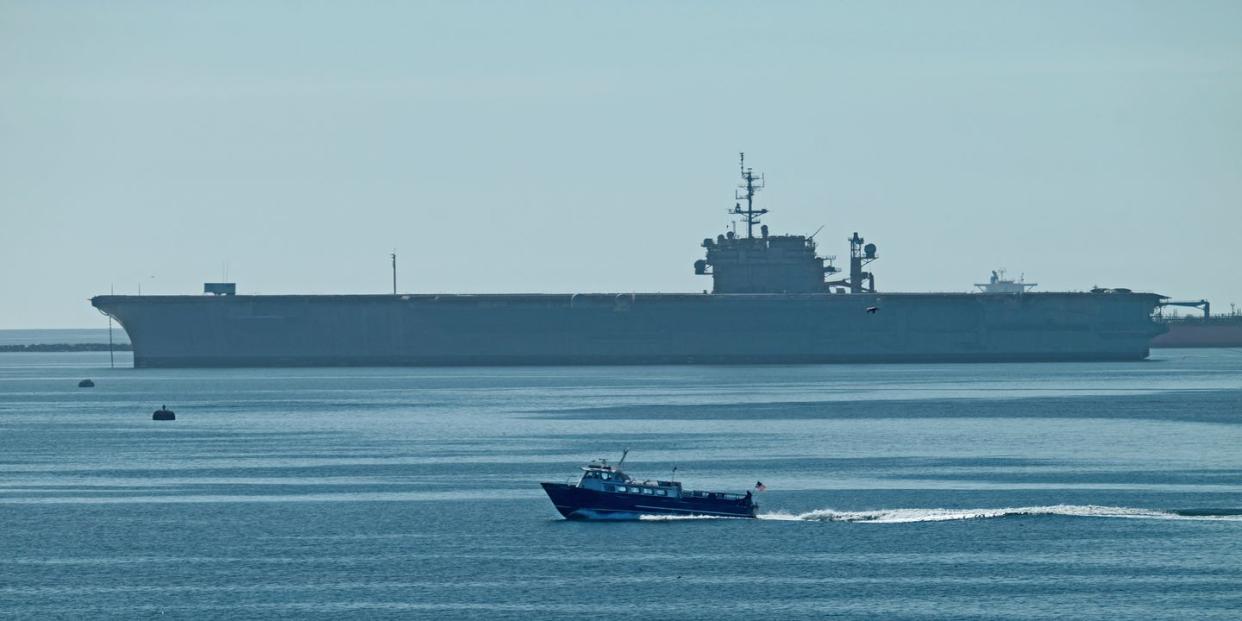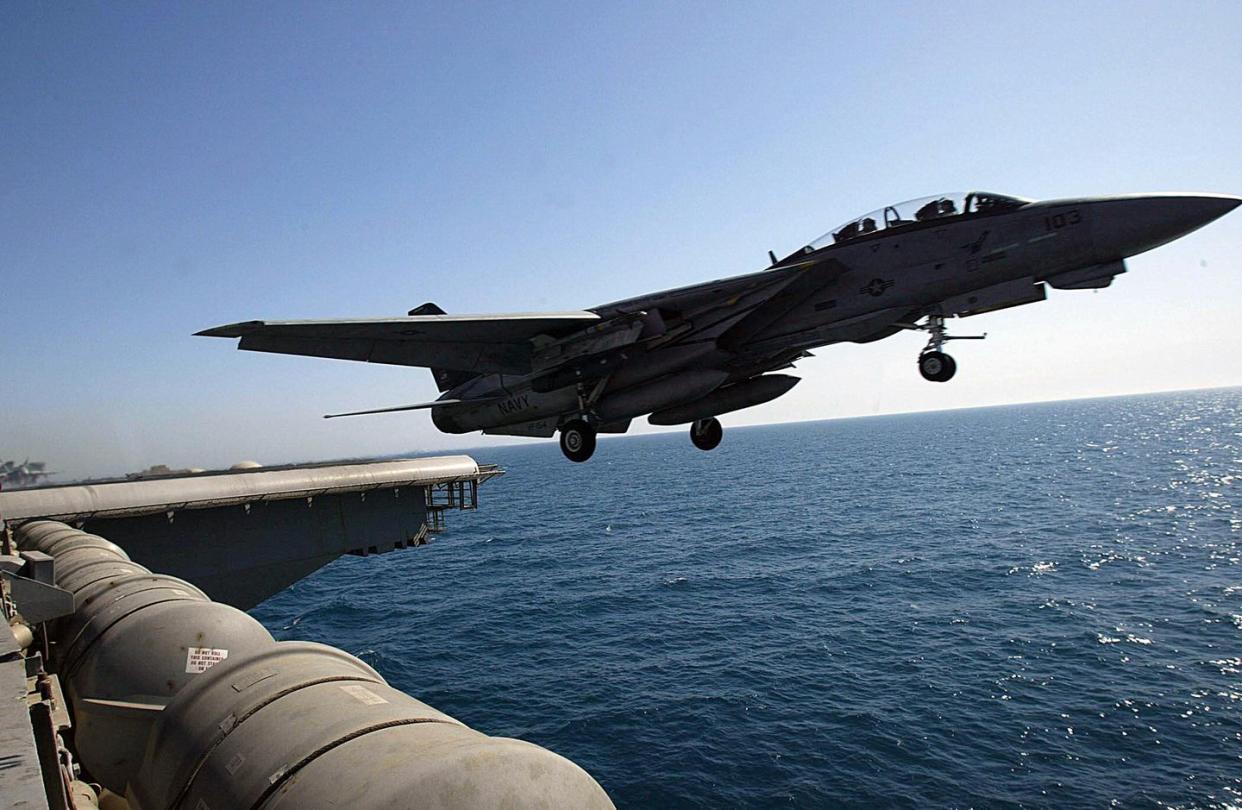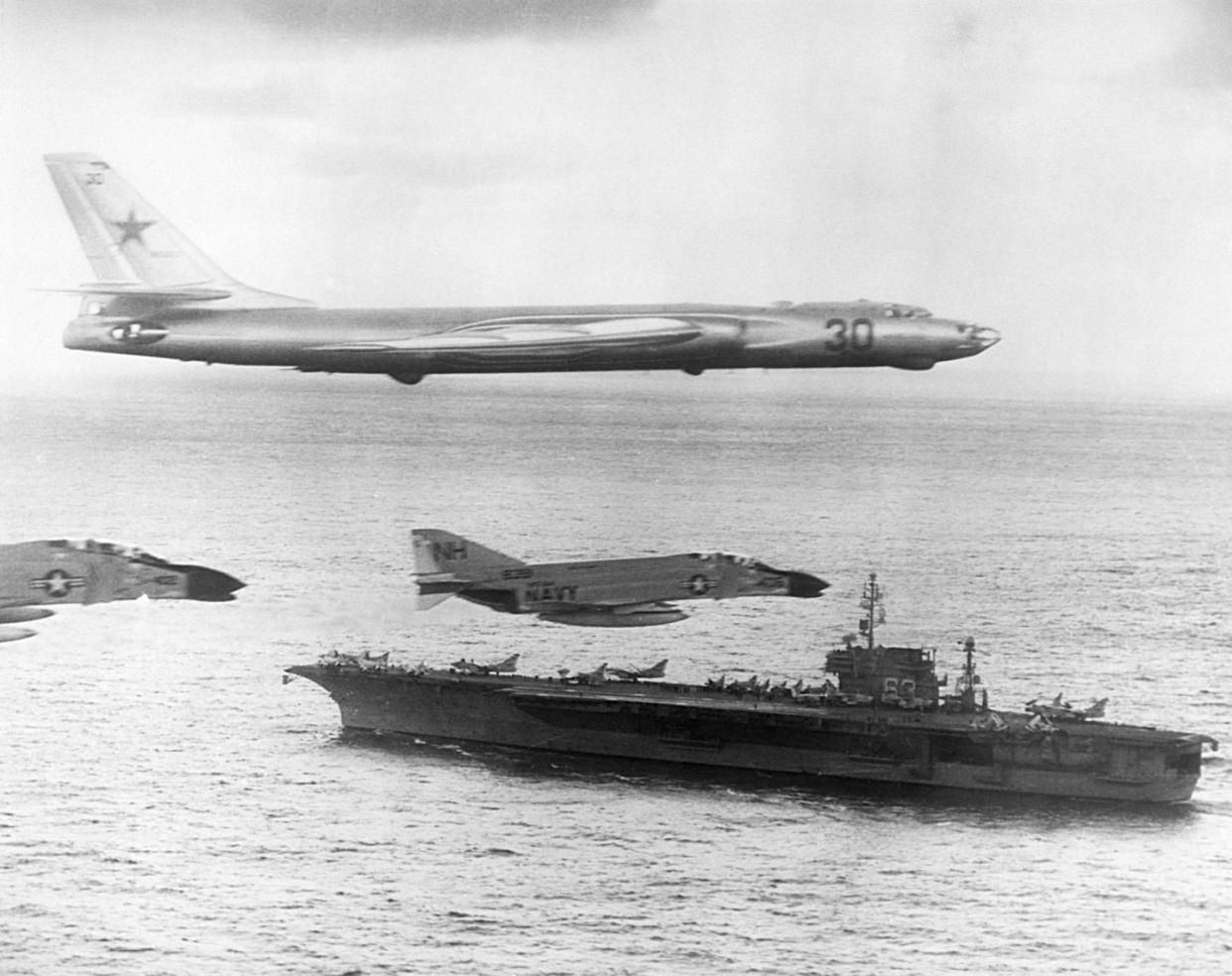R.I.P. USS Kitty Hawk, the Navy’s Last Conventionally-Powered Aircraft Carrier

The former USS Kitty Hawk has arrived in Texas, five months after departing from Washington state.
The hulk traveled from Washington state to Texas around the tip of South America.
Kitty Hawk was the last conventionally-powered aircraft carrier in the U.S. Navy.
USS Kitty Hawk arrived at the breakers last week after an epic 16,000-mile voyage. Kitty Hawk, the last conventionally-powered aircraft carrier to serve in the U.S Navy, arrived at the Port of Brownsville, Texas where she will be dismantled for scrap. A veteran of the Vietnam and Afghan wars, Kitty Hawk also served as America’s only forward-deployed carrier in Japan.

The carrier was decommissioned in 2009, after returning from forward-basing in Japan, and has remained in storage at Naval Base Kitsap in Bremerton, Washington. Naval Sea Systems Command sold Kitty Hawk and her sister ship, USS John F. Kennedy, to International Shipbreaking Ltd. in October 2021 for just one penny each.
The low price reflects a number of factors, including the need to tow the ships around South America’s Cape Horn, as the ships are too big to transit the Panama Canal. Kitty Hawk’s steam boilers and turbines are no longer operational, so the ship must be moved by tugboat.
The trip from Bremerton to Brownsville took Kitty Hawk approximately five months. Here she is on January 15 leaving Bremerton, Washington, under tow:
According to Ship Management International, Kitty Hawk is International Shipbreaking’s fourth “supercarrier” project. The carrier will “undergo an extensive dismantling and recycling process which is expected to take around a year and a half to complete.”
Kitty Hawk was commissioned in 1961 as the first of three Kitty Hawk-class aircraft carriers, a class that also included the America and Constellation. The class was the last conventionally-powered group of aircraft carriers to enter the U.S. Navy, and the oldest Kitty Hawk, herself, was the last to be retired. The Kitty Hawks were followed by the USS Enterprise, the first nuclear-powered aircraft carrier, which was decommissioned in 2012.

Kitty Hawk was 1,047 feet long with a top speed of 30 knots. She had a crew of 4,582, was equipped with four C-13 Mod 0 steam catapults, and could carry between 80 and 90 aircraft. Throughout her career, she carried aircraft as small as the A-1 Skyraider and A-4 Skyhawk to the huge A-1 Vigilante and A-3 Skywarrior, as well as the F-14 Tomcat fleet air defense fighter.
From 1998 to 2008, Kitty Hawk was based at Yokosuka Naval Base in Japan. The distance between West Coast naval bases and the Western Pacific compelled the Navy to forward-deploy one carrier battle group, complete with aircraft and escorts, in Japan.

The current U.S. Navy carrier fleet is entirely nuclear powered, consisting of ten Nimitz-class carriers and USS Gerald R. Ford, the first of a new class. The Navy prefers nuclear-powered aircraft carriers as they don’t require fuel oil and have essentially unlimited range. A nuclear-powered aircraft carrier can depart immediately to deal with an international crisis without having to top off with fuel. The use of nuclear power also lessens the burden on the Navy’s logistics fleet to keep carriers moving.
You Might Also Like
